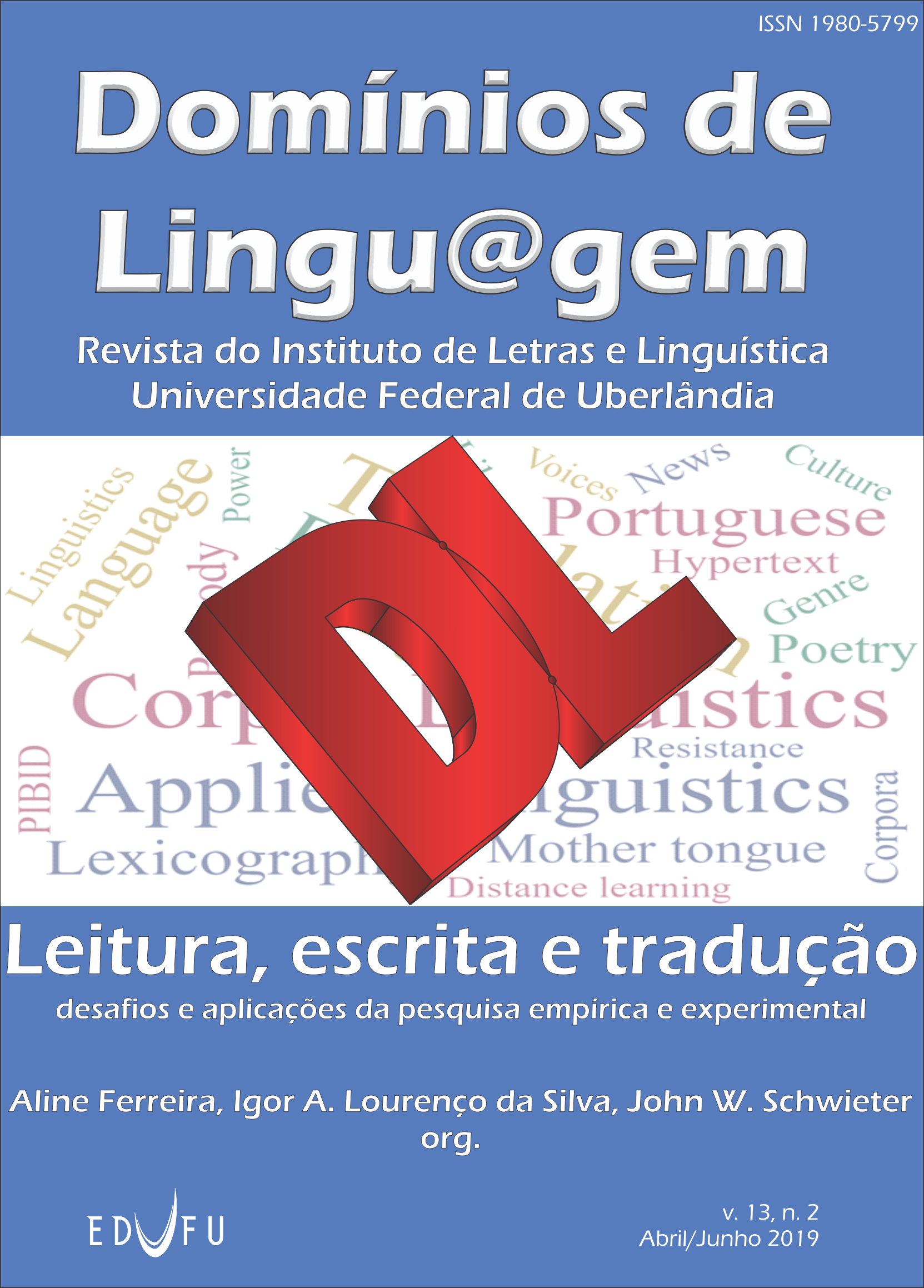A framework for analyzing vocabulary activities in foreign language
establishing relationships between reading and vocabulary
DOI:
https://doi.org/10.14393/DL38-v13n2a2019-2Keywords:
Reading, Vocabulary, TextbooksAbstract
In foreign language acquisition, the relationship between vocabulary and reading comprehension is established. Vocabulary knowledge predicts reading comprehension and reading can improve foreign language (FL) learners’ vocabulary. (LAUFER 1992; 2017; DROOP; VERHOEVEN, 2003; FINGER-KRATOCHVIL; 2014). With this in mind, this article presents a framework for analyzing vocabulary activities in FL textbooks, proposing the investigation of the following aspects: 1) how vocabulary is presented in FL textbooks in relation to the reading section; 2) which types of words are being approached – high frequency words, false-cognates (SÖKMEN, 1997), and words that are part of main/secondary ideas of the text (GAGNÉ et al., 1993); 3) whether there are opportunities for meeting the words in different contexts for retention (SÖKMEN, 1997); and 4) what level of processing the activities promote (CRAIK; LOCKHART, 1972; LAUFER; HULSTIJN, 2001). This framework was used by De Azevedo (2018), and can considered a research tool for teachers/professors researchers to analyze vocabulary activities in FL textbooks.
Downloads
Metrics
Downloads
Published
How to Cite
Issue
Section
License
Authors who publish in this journal agree to the following terms:
Authors retain the copyright and waiver the journal the right of first publication, with the work simultaneously licensed under the Creative Commons Attribution License (CC BY-NC-ND 4.0), allowing the sharing of work with authorship recognition and preventing its commercial use.
Authors are authorized to take additional contracts separately, for non-exclusive distribution of the version of the work published in this journal (publish in institutional repository or as a book chapter), with acknowledgment of authorship and initial publication in this journal.









